Plug-in Electric Vehicles refer to vehicles that are powered by electricity from off-vehicle sources or can be self-contained with a battery, solar panels, fuel cells, or an electric generator to convert fuel to electricity. EVs include, but are not limited to, road and rail vehicles, surface and underwater vessels, electric aircraft, and electric spacecraft.
The literature covering Plug-in Electric Vehicles (EVs) contains many charging/discharging strategies. However, none of the review papers covers such strategies in a complete fashion where all patterns of EVs charging/discharging are identified.
- Electric vehicles
- charging strategies
- optimization
Review1. Introduction
1.1. Motivation and Background
1.2. Literature Review
1.3. Contribution
-
Clearly and systematically classifies different charging and discharging strategies
-
Presents (in detail) the advantages and barriers as well as positive and negative impacts on power grids of the identified strategies
-
Defines new strategies that (up to the date of this review) were not mentioned in the literature
-
Rates the strategies based on detailed coverage of multiple aspects of interest
-
Comprehensively identifies the optimization constraints of charging/discharging strategies as covered in the literature
-
Provides recommendations on the suitability of each strategy for specific applications
2. Categorizing All Charging Strategies
2.1. Uncoordinated Strategies
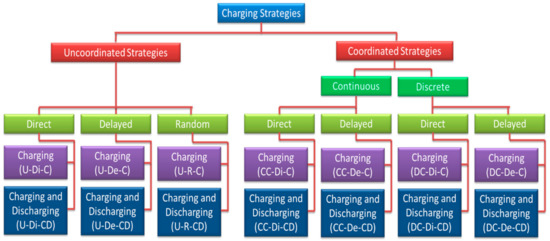

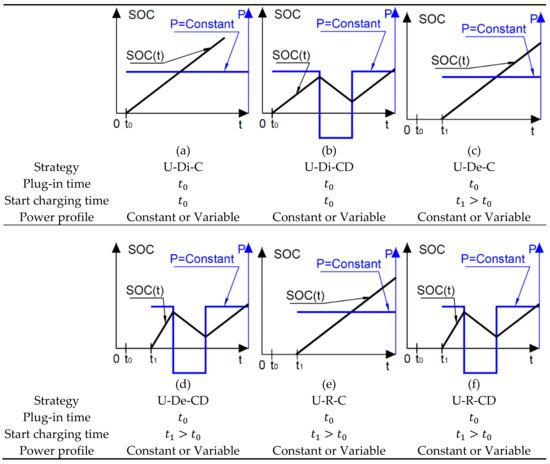
2.2. Coordinated Strategies
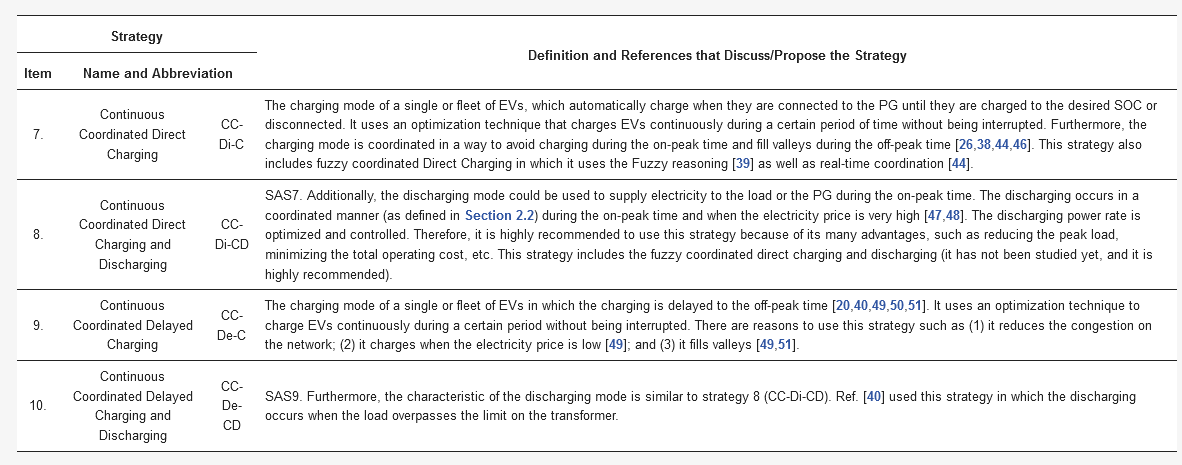
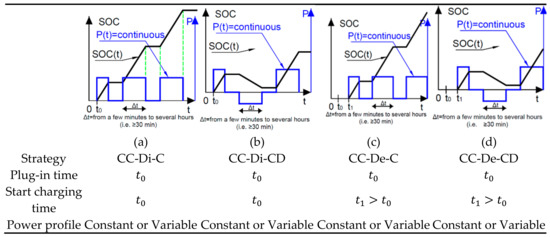

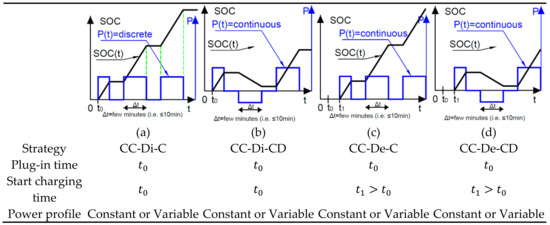
This entry is adapted from the peer-reviewed paper 10.3390/wevj12010011
